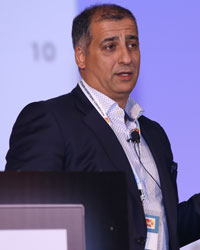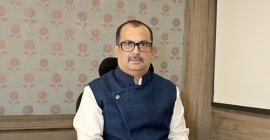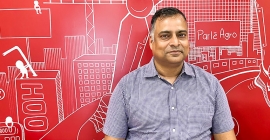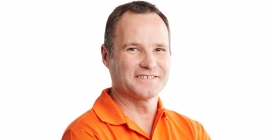‘OOH has a vital role in smart city development’
By Rajiv Raghunath - September 03, 2018
We need to continue to evolve as a medium, and smart cities provide a great platform for OOH, says Naren Patel, CEO, Primesight, the UK We need to continue to evolve as a medium, and smart cities provide a great platform for OOH, says Naren Patel, CEO, Primesight, the UK
 What are the most distinctive patterns that you see in ad spends around the globe, and in particular the UK market? Is OOH competitively positioned to leverage the growth opportunities in a changing global business environment?
What are the most distinctive patterns that you see in ad spends around the globe, and in particular the UK market? Is OOH competitively positioned to leverage the growth opportunities in a changing global business environment?
The key change that is happening in the UK and other markets is the move away from brand building to activation. According to the IPA (Institute of Auctioneers in Advertising), the optimum balance of brand and activation expenditure remains at around 60:40 with strong evidence that deviation from either side of this point results in a marked decline in long-term effectiveness. However, since the launch of Google and Facebook, advertisers are moving more and more budgets to activation. Campaigns with activation objectives rose from 47% of cases prior to the global financial crisis to 55% subsequently. Over the four years to 2016, the figure reached 72%.
Although OOH has traditionally been viewed as a brand building medium, the launch of digital OOH and the increase in targeting and proximity OOH has ensured that we have maintained share.
You have been a strong votary of use of new technologies in OOH advertising, and under your leadership Primesight has taken pioneering steps like turning BT phone kiosks into advertising media. On a larger plane, do you see OOH playing a key role in the development and evolution of smart cities?
I believe that OOH has a vital role in the development and evolution of smart cities. We need to continue to evolve as a medium, and smart cities provide a great platform for OOH. We have the benefit of having assets in city centres, with the ability to connect to power and the internet. We are very excited to have started the process with InLink in the UK. However, we have only scratched the surface. As an industry we need to start offering air quality monitoring, 5G small cell integration and providing useful data from our locations to the cities that we serve.
As digital OOH gains ground, where do you see the conventional formats in the overall OOH mix in the next 3-5 years in UK and indeed many other markets around the globe?
I do believe that the conventional formats will continue to exist. The economics still make it difficult to convert every location to digital and certain advertisers are not happy sharing a digital site and want 100% ownership of a location. However, conventional sites will need to develop their own USPs. This could be coverage of smaller town and cities, banner locations or products that cannot be digitised such as bus and taxi advertising.
What factors would help OOH gain a larger share of the overall ad spends? Is the medium seriously challenged by the rapid growth of digital media?
The OOH medium is being challenged by the likes of Google and Facebook who can offer a great deal of accountability and better demonstrate attribution. Digital OOH has provided us with a defence against these global media giants but we need to do more. As a medium we must start exploiting technology to make OOH easier to buy and sell. We need to collaborate to ensure that advertisers truly understand the benefits of OOH and continue to find ways to demonstrate the effectiveness of the media for long term brand building as well as activation. Newspapers have lost 1/3 of their revenue since 2014, totalling nearly £1B. This money has all moved online mainly to Facebook and Google. We need to ensure that clients and agencies understand that digital OOH could offer these advertisers an alternative channel.
Having participated in OAC 2017, from your experience would you recommend any particular steps to augment the quantitative and qualitative research on Indian OOH industry & business?
In today’s data driven, activation led world everything needs to be measured. Advertisers need to understand the audiences that OOH delivers so they can properly understand and value the medium. Research should be treated as an investment for the long-term health of the medium. My advice is to marginally reduce the investment in new sites and put that money into research.
Do you see any scope for cross-border collaborations between the UK and Indian OOH companies in the near future?
The UK is generally seen as the leader in the OOH sector and I am sure that both parties would benefit from collaborating on projects.

Stay on top of OOH media trends








